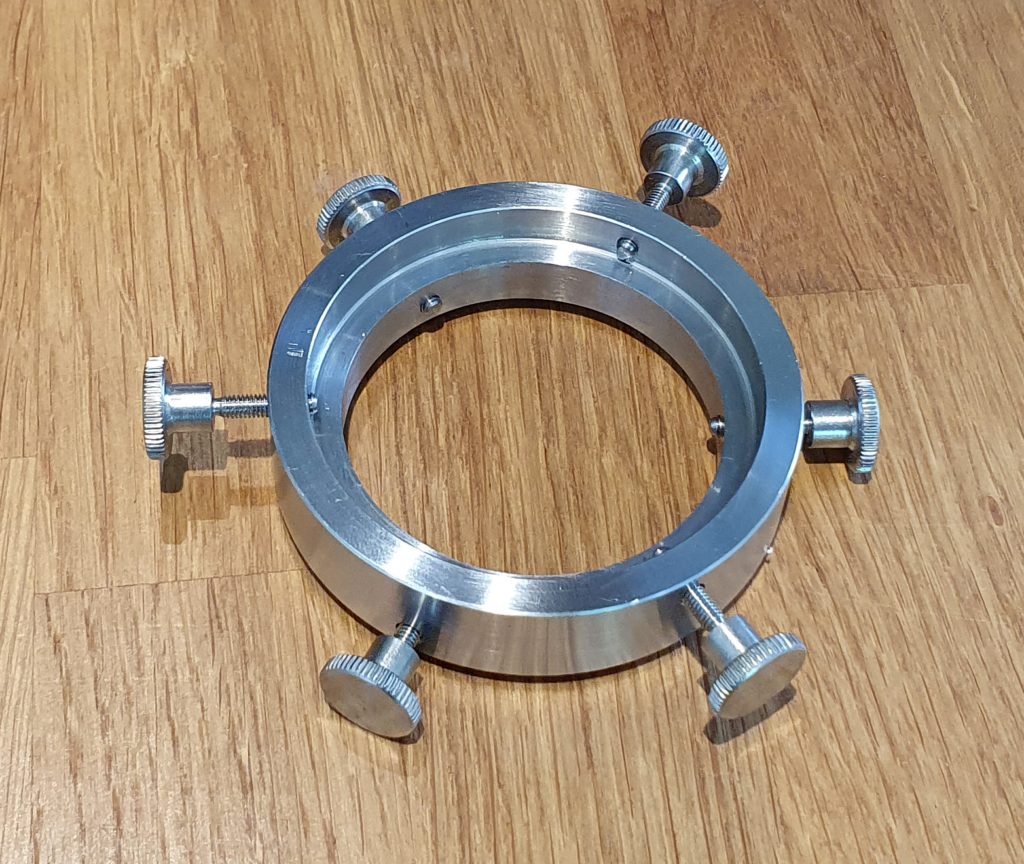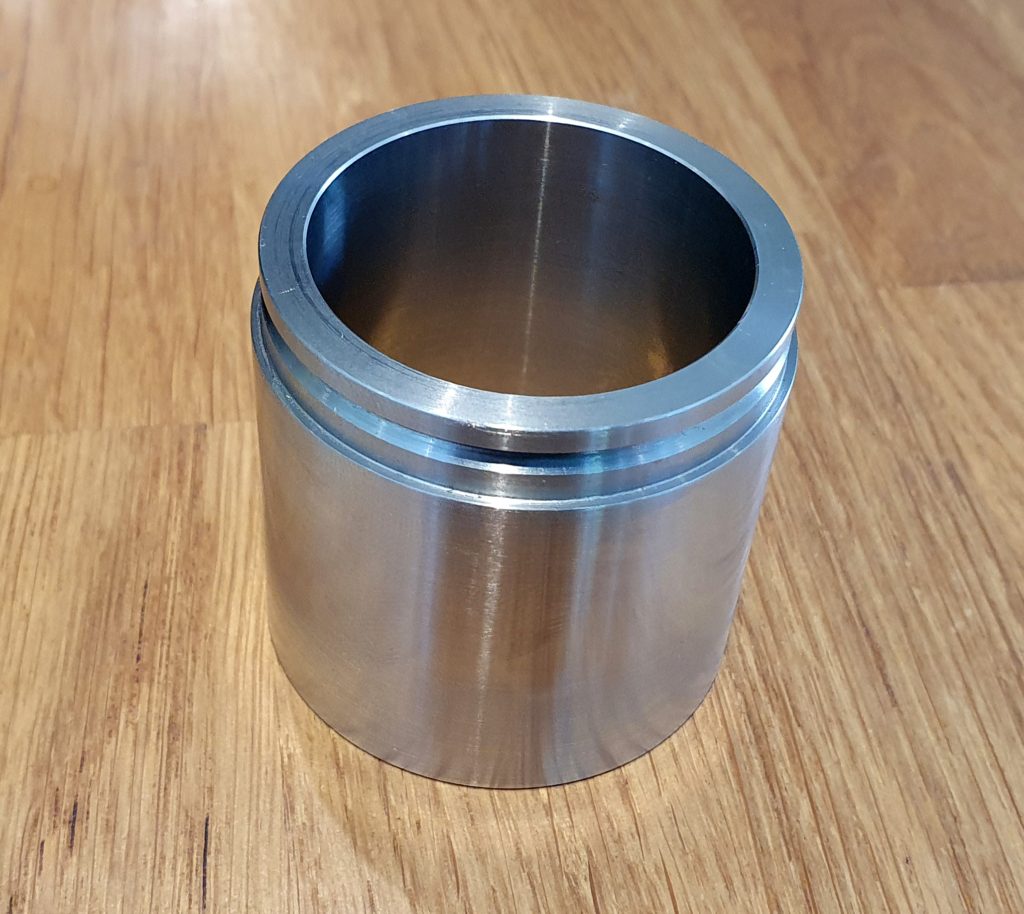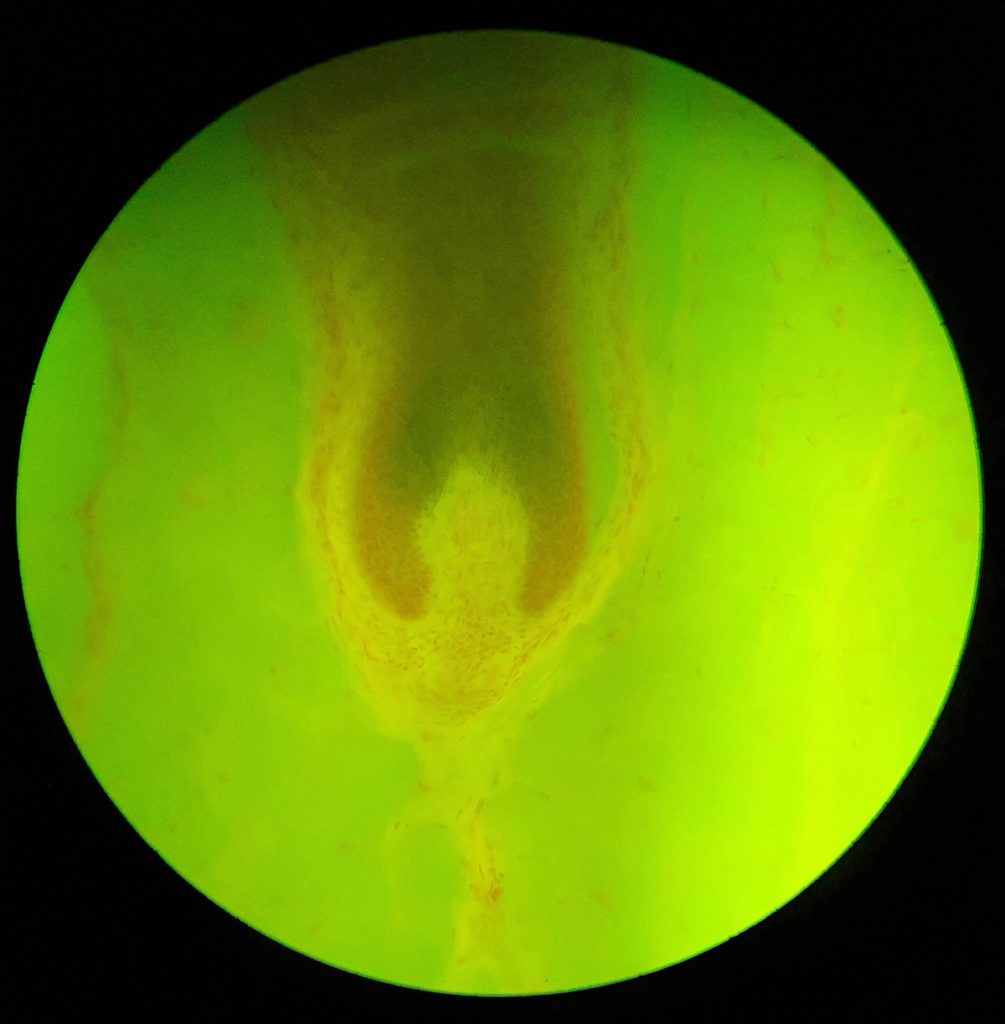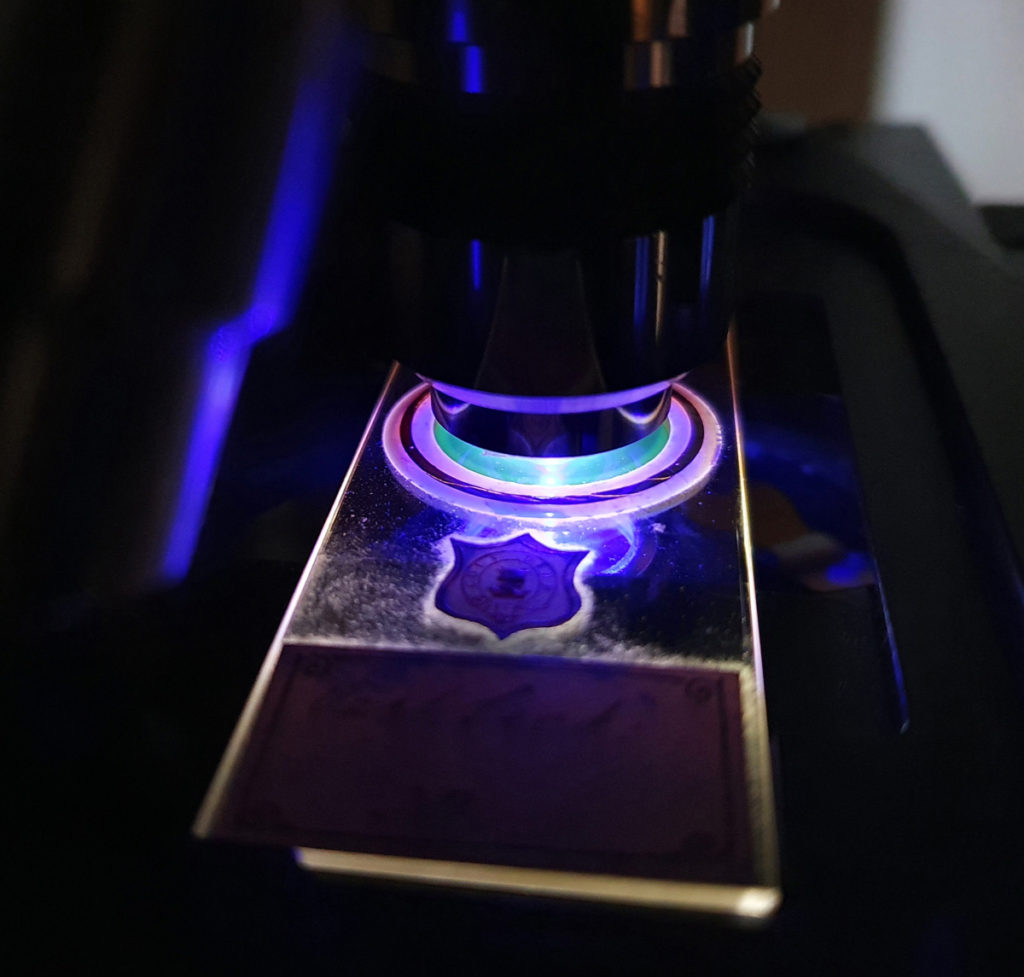Using an old microscope for research has good and bad points. Good points include build quality and ease of working on them. Bad points include lack of spare parts and add ons. As I was tracking down UV lights for mine, I was struggling to get what I needed here in the UK, basically because it is now 40 years old. One thing in particular that I was after was a 100W mercury light source, for fluorescence and transmission imaging. I managed to find a couple of different Olympus lamps (with cables different fittings), but no power supply. However I did find a 50W Zeiss mercury lamp and power supply for not much money. Zeiss lamps though do not fit my old Olympus, so how to get it to work? This is where knowing a good machine shop becomes vital…..
The Zeiss lamp I found had a larger fitting than the Olympus, and unlike the Olympus was male. So I needed a female to female adapter which reduced in diameter. I drew up some plans and approached Machined Precision Components Ltd in Watton, Norfolk to make them for me. 3 weeks later and two items arrived (below).


The two adapters do different jobs. The first one allows me to attach the Zeiss lamp to the Olympus fluorescence imaging setup. The second one allows me to use the lamp for UV transmission microscopy as well, and as I got both of them done at once it saved on postage (once a Yorkshireman, always a Yorkshireman).
MPC’s work was top notch and everything fit really well. Here’s the adapter being used to fit the Zeiss lamp onto the microscope.

The adapter allows me to use this 50W Zeiss lamp instead of the original Olympus 100W one, which is very handy as the replacement bulbs are cheaper for the Zeiss, and as each bulb costs more than the adapter did this is useful.
Does it work? Well yes it does. Here’s a fluorescence image of a skin sample showing a hair root under blue/UV induced fluorescence.

And also the incoming light being focused on to the microscope slide.

Repairing and renovating old equipment can be very cost effective for research, however sometimes parts will need to be made if you are combining equipment from different manufacturers. Knowing a good machinist is a key part of any researchers contacts when rebuilding old equipment. Thanks for reading, and if you want to know more about this or my other research areas, you can reach me here.
